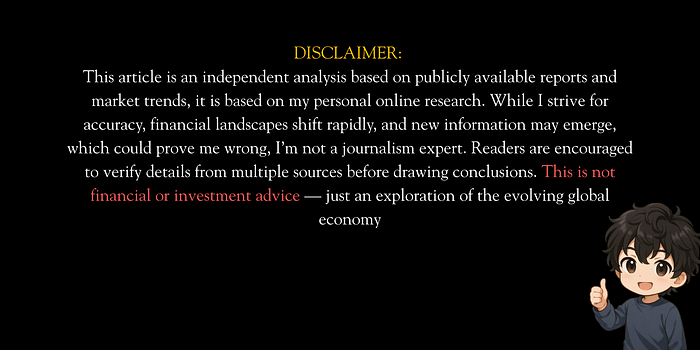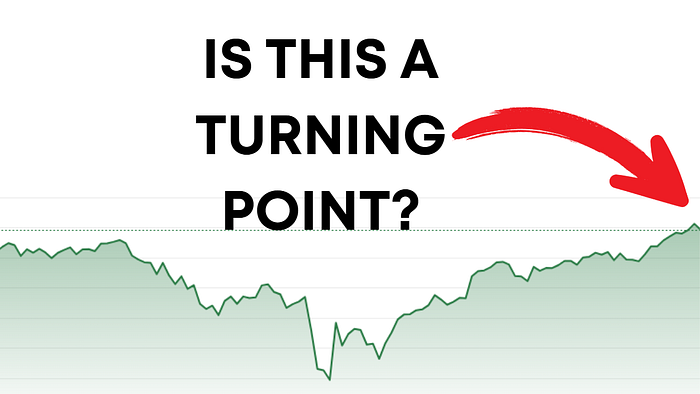Corporate profits just doubled in five years.
Let that sink in.
In Q2 2020, U.S. corporate profits after taxes were $1.8 trillion. Today? $3.6 trillion. That's the fastest five-year jump in recorded history.
To put it into perspective: it took the economy 33 years — from 1986 to 2019 — to achieve that same jump.
But here we are, halfway through 2025, and corporate America has never had it this good.
And yet?
Retail investors are bearish.
Not just a little bearish. Historically bearish.

Roughly 50% of individual investors believe the market's heading down over the next six months. That's what the AAI Investor Sentiment Survey says.
In normal times, that number floats around 30%.
So what gives?
To be fair, there's plenty of fear in the air. Debt ceiling drama. Trade wars. Oil shocks. Middle East conflict. Spiking tariffs. Inflation shadowboxing. You name it, it's in the headlines.
But fear doesn't equal fundamentals.
Because while retail sits on the sidelines, watching CNBC and waiting for disaster, corporate giants are buying back their own stock like it's Black Friday.
And not quietly.
We're seeing the biggest surge in corporate buybacks since the early 2000s. Companies are betting on themselves. They're pulling shares off the market, reducing supply, and preparing for another leg up.
Why?
Because earnings haven't cracked. Not even close.
Despite all the noise about tariffs and recession risk, earnings across the S&P 500 have climbed — not collapsed.
Look at the data.
S&P 500 earnings expectations have been inching toward all-time highs throughout 2025. Not shrinking. Not stagnating. Rising.
And the reason?
Big Tech.
The tech sector's earnings have exploded this year. Considering tech now makes up a massive slice of the S&P 500, that strength is pushing the entire index up.
This isn't just anecdotal. It's structural.
Strong earnings drive long-term market direction. Always have. Always will.
That's why the market tends to go up over the long run — not because of vibes, but because the underlying companies keep growing their profits.
2023 and 2024 were driven by that exact mechanism. And despite a mild slowdown earlier this year, we haven't seen the kind of earnings collapse that usually comes with a real recession.
In fact, earnings could re-accelerate into year-end. And that's before we even talk about the dollar.
Let's get into that.
The S&P 500 is priced in U.S. dollars. When the dollar weakens, U.S. stocks priced in foreign currencies get cheaper. So global investors rush in. That creates upward pressure on prices.
But that's not all.
A weaker dollar boosts foreign earnings for multinational companies. Half of the S&P 500's revenue comes from overseas. When the dollar drops, those euros and yen convert into bigger dollar profits.
That's a hidden earnings tailwind.
And right now, that tailwind is picking up speed.
Since Trump returned to office, one of the administration's goals has been to weaken the dollar. The logic? Make American goods and labor more competitive globally.
The result? The dollar index has fallen nearly 10% since February.
And that decline might just be getting started.
Sure, there'll be short-term counter moves. But structurally? This looks like a trend — not a fluke.
Now stack that on top of everything else.
- Record earnings
- Record buybacks
- A weakening dollar
- A market climbing despite fear
Still not convinced?
Let's talk about the Fed.
The Fed's already slashed rates from 5.3% down to 4.3%. And markets are expecting even more cuts throughout the rest of 2025.
Lower interest rates mean cheaper borrowing. That helps businesses grow. It also pushes investors to chase higher returns — which pushes more money into stocks.
It's the classic risk-on setup.
Add all this up, and you've got the perfect cocktail for a bull market continuation. Yes, there might be a short-term pullback. Maybe 4–5%. Markets don't move in straight lines.
But zoom out.
The structural forces are still leaning bullish.
- Earnings are strong
- Big Tech is leading
- The dollar is dropping
- The Fed is easing
- Corporations are buying
Meanwhile, retail investors are scared. Bearish. Frozen.
That's the real story.
Retail sentiment is a lagging indicator. When the crowd is most fearful, it often means the best opportunities are already here.
Right now, half the market thinks we're heading for a crash.
The other half — the ones with billions in cash — are buying everything in sight.
The question isn't what the headlines say.
It's who you believe.
The guy on TikTok yelling about doom?
Or the CFO quietly authorizing a $10 billion stock buyback?
Watch what people do — not what they say.
Because if earnings hold, the dollar weakens, and rates keep falling, this market could run a lot higher than most people think.
The window's open.
Retail might be late to the party — again.
💡 Liked this article? That's just the tip of the iceberg.
I spend HOURS each day deep-diving into U.S. finance — but not everything fits in one post. That's why I created a FREE WEEKLY NEWSLETTER where I unload everything I've learned, no fluff, no filler. No BS.
Each week: — Top market moves & what they really mean — Hidden Fed signals, inflation clues, interest rate plays — Fast takes on companies + trends the media glosses over
You will ALSO get one STARTUP IDEA every week
🧠 It's not investment advice. It's powerful information. It's power. The kind most people miss.
👉 Join here → Wall Street Gradient Newsletter

Hi, I'm Shubhransh Rai — I'm an entrepreneur and I also run 2 publications - WallStreet Gradient (Daily Insights on The US Stock Market and Financial Strategies) - Quantum Information Review (Articles regarding Quantum Computing, Physics and AI)
Follow me and my Publications for More of these daily insights (I will bore you with this information)


